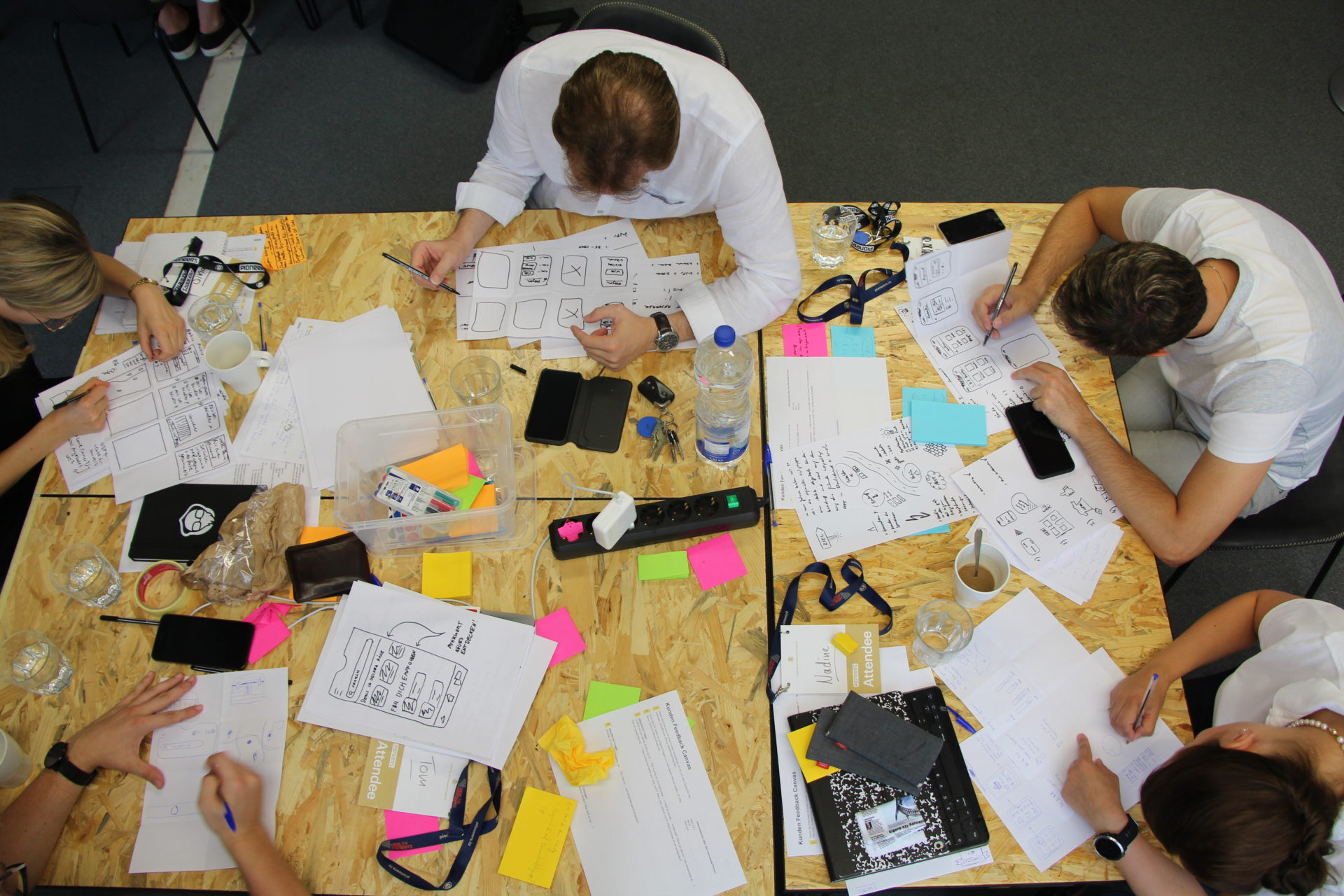
A case study of an innovation lab within the Sparkassen Financial Group Germany
Don’t just create ‘innovation’, create products, services and real tangible benefits for customers. This was the declared goal of our project with SPAYCE — Payment Innovation Lab.
“There are too many innovation departments and activities out there which are merely focused on developing prototypes that do not get developed further. We want, rather no, we need to produce real, sustainable benefit for our customers.”
This was the call to action the SPAYCE team approached us with. And oh boy, was that what we wanted to hear!
Two years in, we are looking at a 66% success rate of topics that made it through the initial filtering process, more than 100 engaged employees, and +150 (potential) customers we interacted with. How did this all happen, what did we create and learn, you ask? Well, let me tell you!
Before we dive into our learnings, let’s talk about outcomes. We want to particularly talk about two projects that we executed recently.
Control your credit card remotely
Most banks require their customers to call a hotline in case they need to make geographical restrictions or if they need to fully block their card. This is obviously annoying and time-consuming, not only for the customer but also for service hotline employees.
Once the two-sided potential was discovered, we started to build a low-fidelity prototype to test if and how the customers wanted to use a potential application. After a first iteration, a prototype within the sandbox of a credit card scheme, including test credit cards, was created to also test the feasibility and the future implementation possibilities within the banking environment.
Especially in big organizations, technical feasibility and timing can be a major road blocker.
This is why we like to prioritise this topic very early on in the process. After a successful trial and having secured funding for the functional prototype, the solution is now in the midst of being executed and implemented within three institutes for testing in a real environment.
Digital receipts in retail
To save time, paper, and nerves, and after validating the need with both potential customers as well as partners from retail, a solution to digitize receipts when shopping was developed.
At the very beginning, even before thinking about what a potential solution could look like, the intrapreneurship team engaged in an extensive discovery phase. The goal was to find out as much as possible about a specific environment and topic, either through research or conducting interviews. This not only helped to improve knowledge about the project but it also greatly improved the commitment of the intrapreneurs involved.
After the first stages, it was clear that collaborating with a startup makes the most sense since they already have existing solutions, as well as connections to retailers. Together with the customer base and connections of the Sparkassen Financial Group, both strengths could be leveraged.
Now that you have an idea of what we achieved and how we did it, let us talk about a couple of learnings that we had along the way.
1. Real work starts when the hype is over
Once the prototypes were tested and more and more knowledge about the future product could be acquired, the initial — “look at us, we are doing innovation by asking customers” — wears off, and the hard work starts.
This is where the nature of an agile project meets the corporate environment. Here, it is important to stay in the loop as long and intensively as needed to make it work. A lot of the time this can take up many resources – nearly as many as were required for the few stages before.
You, as someone who is responsible for innovation, have to make sure that what started out as an idea within your realm will make it to the customer. After all, this is your true and final goal, right?
2. Look at the macro and micro perspective
There are two perspectives of a successful innovation operation. The macro lens on the one hand looks at the stakeholders of an innovation hub, the mix of opportunities followed through (the portfolio so to say), and how to build an engaged network of contributors. The micro perspective on the other hand is concerned with the success and advancements of certain concrete opportunities. It ensures that outcomes will be achieved as well as wants and needs being met. Generally, both perspectives are equally important.
3. Identify needs & opportunities within customer groups
By involving customers, and customer-facing employees, and providing them with the right tools to identify and express their, or their customer’s needs, a broad range of potential opportunities can be identified. Based on certain parameters, a first selection can be narrowed down to a couple of topics that are then addressed within a “Discovery Bootcamp.”
This allows for a full understanding of the background, involved stakeholders and users of a specific opportunity. Only after this step can you fully understand and judge an opportunity. This bootcamp also made a huge difference in terms of team member engagement. Night and day actually. Intrapreneurs were much more engaged in the following process. It felt like proactive co-founders of a startup, rather than on the job extra duty.
Find out more about SPAYCE on their website and feel free to get in touch with them! If you are interested in exchanging learnings or diving deeper into the process of corporate innovation together with Pioneers, contact us via discover@pioneers.io.
